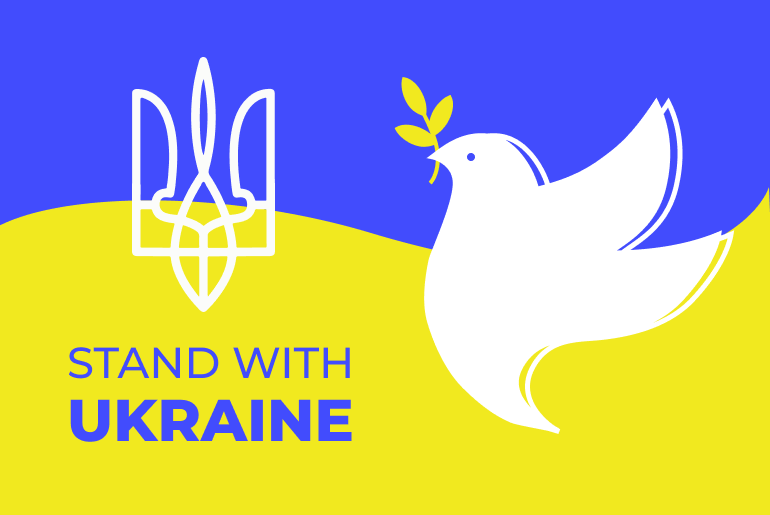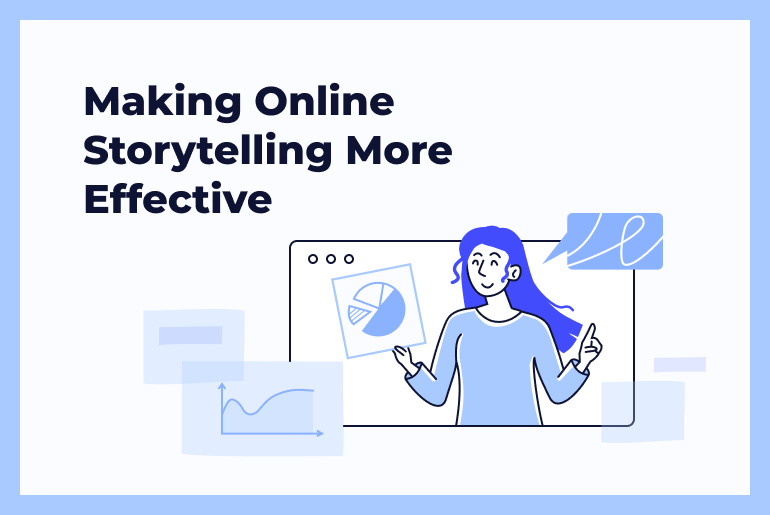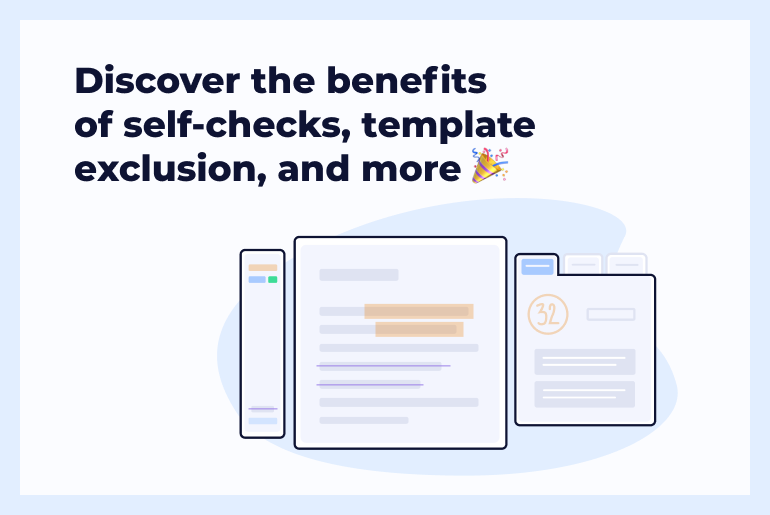Recently, the coronavirus pandemic caused all educational institutions across the globe to shift toward digital learning. This situation made the Unicheck team think about how we can help educators handle these tough times.
So, we’ve contacted a few of the education industry’s thought leaders to discuss the challenges and ways to make this time effective and rewarding.
I believe we have an incredible gift in having so many ways to connect with each other even in times when we must be socially distant. Twitter and Facebook and Instagram and LinkedIn have taken on new meaning. WE need them to stay connected. They used to be a distraction for many. Now they are an opportunity.
Erin Jones
Speaker 1: Erin Jones
A Beyonce in the world of education, Erin Jones has 26 years of experience working with international communities to reach education equity. As an educational consultant, she works with the American government, school districts, and state agencies on equity-related issues. She is also leveraging a platform that was created to inspire students, educators, and others and provide training on how to employ equitable practices to better serve ALL.
What transformations has your institution made to enable e-learning?
I am not with an institution, but I have consulting contracts with several school districts, who are all trying to navigate what to do in response to our current situation. The greatest issues they are facing at the moment are issues of educational equity, especially as they are related to students with special needs. Most of the districts here in WA are unable to commit to a platform or move anything forward systemically until those issues are addressed. Right now, there are suits that have been filed (according to what I am hearing) by parents of special needs students claiming that online learning is not equitable. This has hamstrung districts from being able to switch to any platform.
What tools/platforms have you switched to? Are they effective?
In my work, I am using Facebook and Instagram LIVE to deliver content to my community of learners–from 3-year-olds to educators. That is working well, although not everyone has social media, so I am now also recording on YouTube and sending links out to folks unable to join. I am doing most meetings using Zoom. In fact, I am about to deliver training on Zoom in about 45 minutes. We will see how that goes.
What difficulties are you facing now? Is there any way to overcome them?
I think my greatest challenge is that I am a trainer in racial equity. These conversations, if transparent, are best done face-to-face, not via video conference, but we are doing the best we can at the moment. Part of what has made me effective is that I am very good at reading body language and adjusting my instruction on the fly. I can’t do that from a video screen.
Have you already discovered some out-of-the-box methods to handle your increased workload that wouldn’t probably be effective or even acceptable in regular times?
I actually have NO workload. Every conference and gathering at which I was scheduled to speak (18 of them) through May has been canceled. I made the decision to go LIVE online on my own–to leverage my expertise and access to an audience to help people during this time. My friends who are teachers have been told they may not teach during this time, so I am stepping in. I am also delivering instruction on equity for adults, which people are always asking for but often don’t have time to access.
How do you overcome misunderstandings from online communication with the users who aren’t advanced?
I am learning right alongside folks. I am very transparent about that–we are learning together. WE are all going to make mistakes. Things are not going to work the way we want them to. We need to show grace and mercy.
What benefits have you managed to recognize in the 100% digital learning model for yourself and other members of your institution?
I believe we have an incredible gift in having so many ways to connect with each other, even in times when we must be socially distant. Twitter and Facebook and Instagram and LinkedIn have taken on new meaning. WE need them to stay connected. They used to be a distraction for many. Now they are an opportunity.
Learn more about Erin Jones here. Also, go watch her amazing TEDx talks, Passion for change and Bridges.
Speaker 2: Ray Schroeder
Educational thought leader, Ray Schroeder is a well-respected professor, writer, keynote speaker, and recipient of numerous national awards. He is a Senior Fellow of the University Professional and Continuing Education Association and Professor Emeritus / Associate Vice-Chancellor at the University of Illinois Springfield.
What transformations has your institution made to enable e-learning?
We began digital learning in 1997 at the University of Illinois Springfield. The term began with half of our classes online; some 90% of our faculty members have taught online; more than 95% of our students have taken online classes by the time they graduate. We offer 26 of our degrees and many certificates online. So, our transition was relatively seamless.
What tools/platforms have you switched to? Are they effective?
We continue to use our mainstream LMS and related support technologies. No changes have been made. We recently added a campus-wide license for Zoom that is quite popular.
What difficulties are you facing now? Is there any way to overcome them?
Our Center for Online Learning, Research, and Service staff members work with faculty members who have questions or need support. Nothing out of the ordinary.
Have you already discovered some out-of-the-box methods to handle your increased workload that wouldn’t probably be effective or even acceptable in regular times?
Mostly, we are affected by the closure of the campus–so, all staff is working online. We anticipated this some weeks ago and asked staff to assure their laptops had the latest VPN and were brought home each day. As a senior fellow at UPCEA, I am in communication with a number of our member institutions that do not have robust online programs. I outlined some of the suggestions I share in a recent column in Inside Higher Ed.
How do you overcome misunderstandings from online communication with the users who aren’t advanced?
Just today, I released a brief video for faculty members who have not had experience teaching online.
What benefits have you managed to recognize in the 100% online learning model for yourself and other members of your institution?
It is too early to assess benefits from the response to COVID-19. Our nearly 25 years of experience in online has enabled us to adapt quickly and effectively.
Learn more about Ray Schroeder here.
Speaker 3: Ceceilia Parnther
Researcher, educator, and advocate for student success in Urban Higher Education, Dr. Ceceilia Parnther, assistant professor in the department of administrative and instructional leadership at St. John’s University.
What transformations has your institution made to enable e-learning?
My institution has been proactive in showcasing and educating faculty and students on our e-learning tools such as Blackboard and WebEx . We are fortunate to have the support of our Vice Provost for Digital Learning in leading our efforts strategically. From day to day, we have a variety of add ons, such as Panopto, Voice Thread, and Poll Everywhere, which make engagement easier. Our Center for Teaching and Learning has provided training sessions, our library is working hard to support electronic options, and our academic departments have conducted audits to ensure that faculty feel comfortable with e-learning tools, and if not, that they can partner with someone who can serve as a resource. In the midst of an incredibly difficult situation, it’s been refreshing to see us mobilize and pivot so quickly in support of our students.
What tools/platforms have you switched to? Are they effective?
In addition to the tools supported by my institution, I’ve also used YouTube live and created a podcast on anchor. My goal at this point is simple. I want students to feel connected however they can and whenever they can. This means breaking up curricular content into manageable pieces. Given all of our personal responsibilities and the challenges that come with protecting ourselves in this time, the best I can do is offer connection so that students don’t feel completely overwhelmed.
What difficulties are you facing now? Is there any way to overcome them?
The difficulties I face are similar to those of my students. Uncertainty of what is to come, a need for connection, and a heightened sense of responsibility in all areas. Right now my goals are to assure students that I am here for them and that digital learning isn’t simply placing f2f content online. We are building something together. So far, things are going well. I am very flexible and open to change so I’m checking in with students often to see what we can tweak to make the course interactions intentional and personally fulfilling.
Have you already discovered some out-of-the-box methods to handle your increased workload that wouldn’t probably be effective or even acceptable in regular times?
My working time has changed to accommodate my personal responsibilities, for sure. That means sometimes working in more comfy clothes. A joke, but I’ve found that I need to include more breaks and periods of comfort to manage the needs of my household. I certainly spend more time online, both for connection and for general content. I’ve come to rely on colleagues for support in ways I hadn’t imagined, and I am very thankful for that.
How do you overcome misunderstandings from online communication with the users who aren’t advanced?
I assume the best in all of us and recognize that an immediate response to something isn’t always what it seems. I ask questions. I listen. If I am wrong, I own it. I also use multiple methods of communication. Tone cannot always be understood in written words, so sometimes I’ll make a video response and record it. I’ll also send follow up emails.
What would you advise to make distant work (of an IT administrator/instructor/ student) really effective?
For students:
I recommend dedicating more time than you normally would to coursework. That doesn’t seem ideal right now, but the reality is that life is forcing us to have extreme limits on our time. By scheduling more, you can breathe a bit. Frequent check-ins help to limit excess stress.
Use an app like Whatsapp or GroupMe to stay connected to classwork. You’ve built important relationships that should be nurtured.
For IT:
Programs you are well versed in are new to many students/faculty/staff. Thank you in advance for our continued questions and your patience. When designing online, a slow connection is a scary place. Anything you can do to reassure us on network or support concerns is appreciated.
For instructors:
The classes we are designing will never replicate your intended course. It’s time to look critically at the things necessary to be successful and let go of some of the things that are not necessary. Sometimes that is hard. When offering flexibility and patience during this time, don’t forget to include yourself. Being honest and authentic with students goes a long way in managing difficult situations.
Lastly, you’ll be spending a lot of time reconfiguring coursework and checking in with students. Build in time for yourself to reflect and breathe. You want to avoid burnout, and e-learning requires a sustained connection that we often take for granted in face-to-face modalities.
What benefits have you managed to recognize in the 100% digital learning model for yourself and other members of your institution?
That I (we) can enhance the accessibility of all courses by using multiple methods of connection. That flexibility is rigid until tested. That course instruction will never be the same.
How many times per day do you need to meditate to overcome the anxiety from talking to people who can’t even set up their own account online? 🙂
I’ve been fortunate that it hasn’t been an issue, but I do find that patience in most areas is important, especially now.
A friendly reminder!
During the coronavirus epidemics, our team provides all institutions that don’t have an active Unicheck license with a free trial of Unicheck for the remaining academic term.





